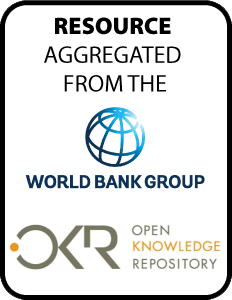Resource information
Over the past few years there has been a
growing interest in the role that forests play in supporting
the poor, in reducing their vulnerability to economic and
environmental shocks, and in reducing poverty itself.
International workshops in Italy, Scotland, Finland and
Germany have focused on the contribution of forests to
livelihoods and the policies needed to strengthen that
contribution. At the same time, Forestry Ministries, though
they are now beginning to feel challenged to demonstrate the
ways in which forests contribute to poverty reduction, are
for the most part moving only slowly to collect new kinds of
data to meet this challenge. There are two main reasons why
the role of forests in poverty reduction has not so far been
reflected in any significant way in either national level
Poverty Reduction Strategy (PRS) processes or in national
forest programs (NFPS). First, most countries have little
data available to illustrate how forests contribute to the
livelihoods of poor households. Second, the data that does
exist rarely gets presented in ways that are meaningful to
those designing PRSPs and NFPS. On the poverty side, there
is a tendency to underestimate the contribution of forests
and off farm natural resources in general, to livelihoods.
On the forestry side, reporting is typically in terms of the
physical resource (trees planted, forest cover improved,
timber sold) rather than livelihoods, with the sole
exception of recording the number of people formally
employed in the forest sector. Such reporting sheds no light
on the contributions made by forests to the lives of the
poor. Their previous experience of data collection has not
prepared them for this. The objective of the partnership was
four-fold: first, to devise a rapid methodology for
appraising forest-livelihood linkages from field exercises;
second, to undertake more extended research through a series
of case studies in six countries; and third, and most
importantly, the objective was to devise ways by which
locally gathered data could enrich national level and in due
course national level processes such as PRSPs (Poverty
Reduction Strategy Processes) and NFPS. Finally, the
availability of this data would better equip countries for
international country reporting on forests, and for
participation in the international dialogue on forests. This
toolkit is the key product from the partnership. It has been
tested in Indonesia, Tanzania, Cameroon, Ghana, Madagascar
and Uganda, with the help of external agencies. It is also
worth noting that as the toolkit methodology is directed at
strengthening the 'voice of the poor' in national
policy debates it has relevance to other policy processes
beyond poverty reduction.


